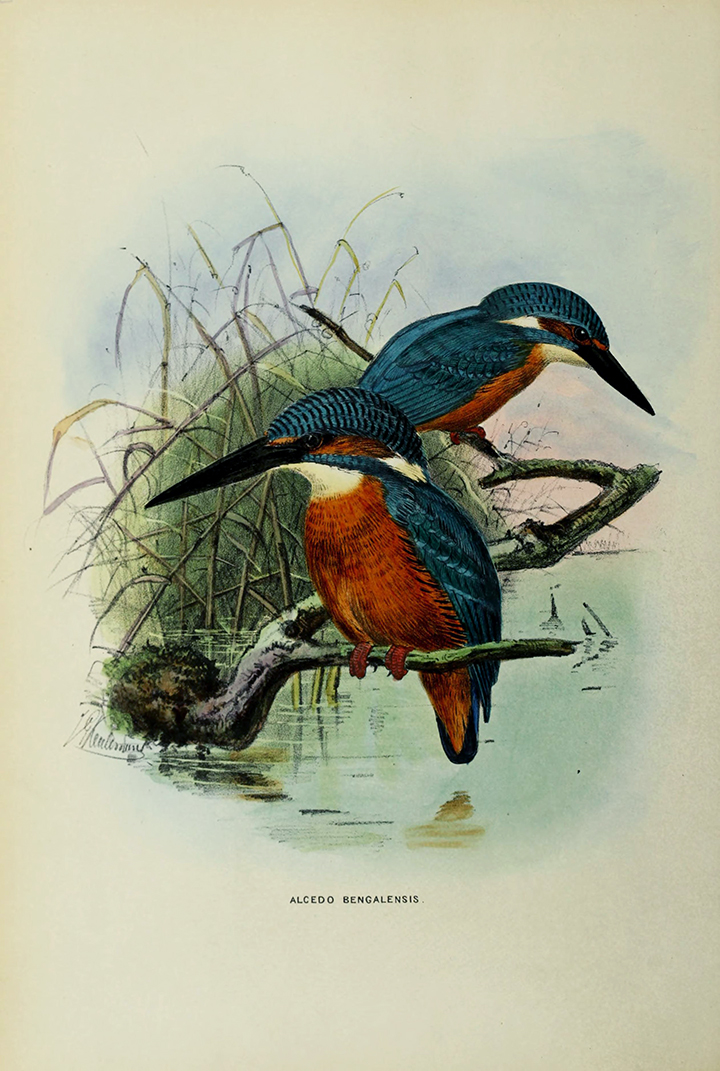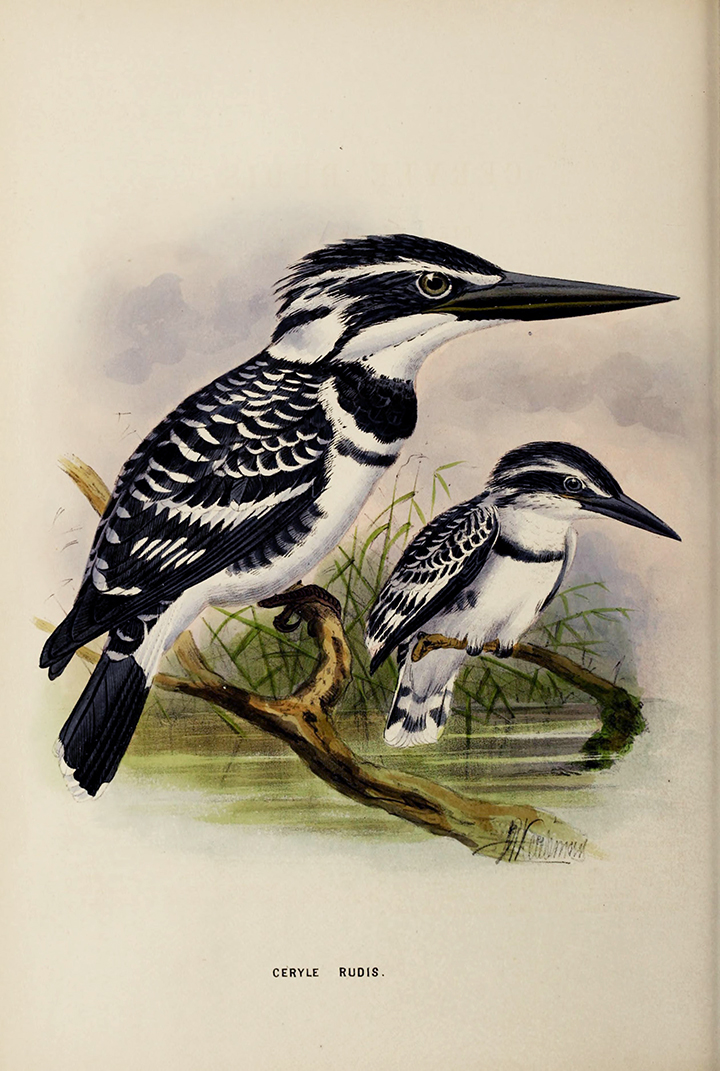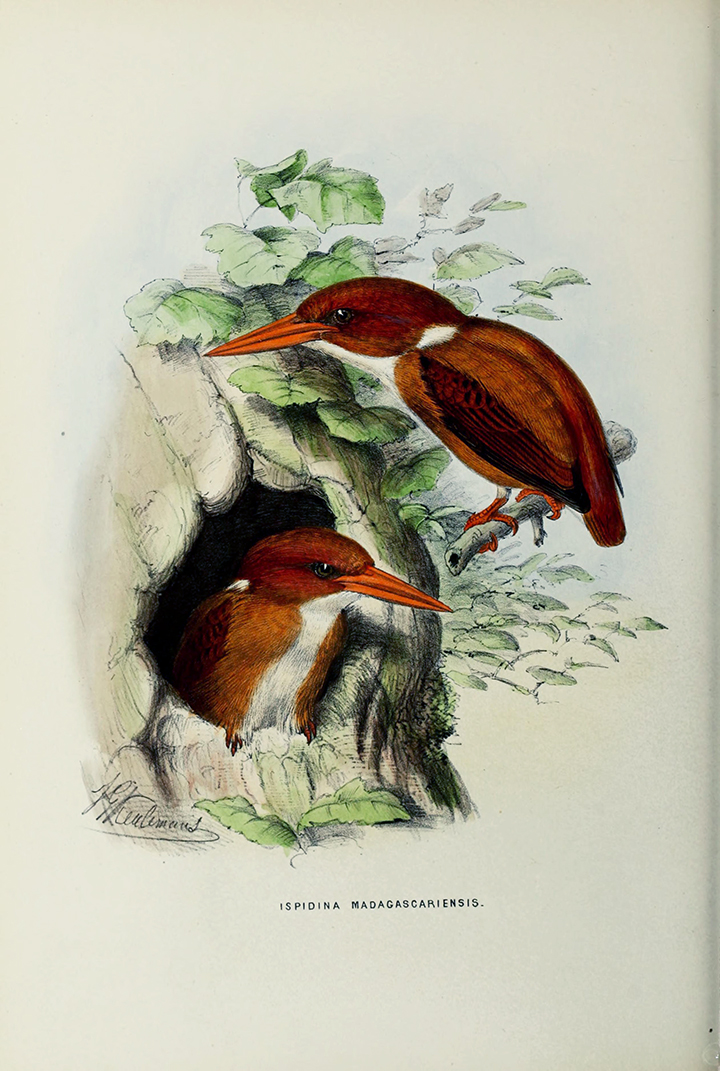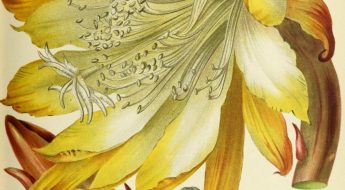Kingfishers and National Bird Day
Today is National Bird Day, a day to celebrate and raise awareness about birds.
We’re celebrating by highlighting one of the rare ornithology titles in the BHL collection: A monograph of the Alcedinidae : or, family of kingfishers (1868-71) by Richard Bowdler Sharpe. The work contains 120 hand-colored lithographed plates by and after famous Dutch bird illustrator Johannes Gerardus Keulemans. Printing and coloring of the plates was entrusted to Mr. P.W.M. Trap.
 |
| Sharpe, Richard Bowdler. A monograph of the Alcedinidae : or, family of kingfishers. (1868-71). Art by John Gerardus Keulemans. http://biodiversitylibrary.org/page/43064470. |
In April, 2015, a first edition copy of this title sold at a Sotheby’s auction for 10,000 GBP. But you can browse and download this work for free in BHL. Our copy was digitized from the collections of the Ernst Mayr Library of the Museum of Comparative Zoology at Harvard University.
According to the Encyclopedia of Life:
Kingfishers belong to the order Coraciiformes and the family Alcedinidae. Within Coraciiformes, kingfishers are grouped into the suborder Alcidines, with todies (Todidae) and motmots (Motmotidae). Alcedinidae comprises approximately 17 genera and 91 species, and is frequently subdivided into three subfamilies; Alcedininae, which comprises most of the “fishing” kingfishers, Halcyoninae, which comprises the “forest kingfishers” that reside primarily in Australasia, and Cerylinae, which includes all of the New World kingfishers.
Kingfishers are small to medium sized colorful birds with short necks, large heads and long, thick bills. They live primarily in wooded habitats of tropical regions, often near water. Despite their name, not all kingfishers are fishing specialists. While some species do consume primarily fish, most species have unspecialized diets that include a high proportion of insects. Most kingfishers are monogamous, territorial breeders, though a few species breed cooperatively.
 |
| Sharpe, Richard Bowdler. A monograph of the Alcedinidae : or, family of kingfishers. (1868-71). Art by John Gerardus Keulemans. http://biodiversitylibrary.org/page/43064554. |
Richard Bowdler Sharpe was born in London in 1847. At a young age he took an interest in ornithology and desired to write a monograph on kingfishers. In 1865, he joined the Bernard Quaritch bookseller company, which allowed him to begin working on his kingfisher monograph in earnest. He used his small income to help acquire specimens. In 1867, he became a librarian at the Zoological Society of London and over the next couple years (1868-71) issued his first book, A monograph of the Alcedinidae : or, family of kingfishers, in parts.
 |
| Sharpe, Richard Bowdler. A monograph of the Alcedinidae : or, family of kingfishers. (1868-71). Art by John Gerardus Keulemans. http://biodiversitylibrary.org/page/43064624. |
Johannes Gerardus Keulemans was the artist for the work. Keulemans illustrated some of the most well-known ornithological titles of the nineteenth century, including works by Daniel Giraud Elliot, Sir Walter Lawry Buller, and Henry Eeles Dresser. He also regularly provided illustrations for The Ibis and The Proceedings of the Zoological Society. In 1869, Sharpe persuaded Keulemans to not only illustrate his monograph, but also to move to London, where Keulemans lived for the rest of his life.
In 1872, Sharpe joined the British Museum as Senior Assistant in the Department of Zoology, where he took charge of the bird collection. He founded the British Ornithologists’ Club in 1892 and edited its bulletin. He also wrote thirteen and a half of the 27 volumes of the Catalogue of the Birds in the British Museum (1874–1898). He authored many ornithology titles over his career, including Wonders of the Bird World, which we highlighted last week as one of the works illustrated by A.T. Elwes. Sharpe died in 1909 from pneumonia.
 |
| Sharpe, Richard Bowdler. A monograph of the Alcedinidae : or, family of kingfishers. (1868-71). Art by John Gerardus Keulemans. http://biodiversitylibrary.org/page/43064692. |
Be sure to explore A monograph of the Alcedinidae : or, family of kingfishers in BHL and the illustrations in Flickr. You can see other works authored by Sharpe in BHL as well. Happy National Bird Day!





Leave a Comment